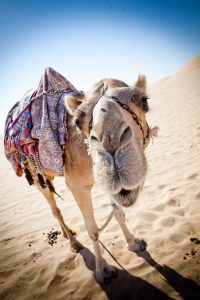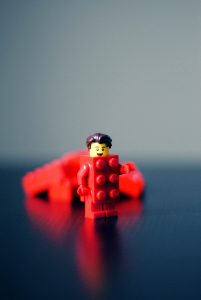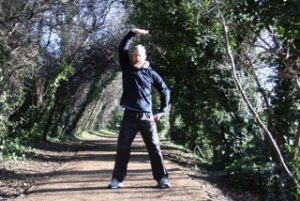So following on from my previous blog where I focussed mainly on running and endurance sport, this week I’m looking at a more holistic approach to exercise, Qi Gong.
No Pain No Gain
In the West we generally believe that doing lots of physical exercise is good for us and it will help us live longer. But I think we just made this up in our heads; there is no actual evidence that body builders or athletes live any longer than the average human. In fact, the evidence suggests the opposite. These days fitness is gauged on how you look, so it’s all about six-packs and ‘just doing it’, and if social media is anything to go by (which it isn’t) they all look great and live perfect lives. But I doubt they are any more healthy than the average person who just does a little exercise and eats and rests well.. So is being fit the same as being healthy? No, it isn’t. Looking great isn’t necessarily the same as feeling great.
Moderation is the key
As I mentioned in my last blog, moderate exercise is good for you. But how much is moderate? The current amount prescribed by the NHS is at least 150 minutes of moderate aerobic activity, such as cycling or brisk walking every week and strength exercises on 2 or more days a week that work all the major muscles (legs, hips, back, abdomen, chest, shoulders and arms). Or, 75 minutes of vigorous aerobic activity such as running or a game of singles tennis every week and strength exercises on 2 or more days a week that work all the major muscles (legs, hips, back, abdomen, chest, shoulders and arms).
But what is moderate?
The danger with anything that is ‘prescribed’ however, is that it doesn’t take the individual into account; it certainly isn’t a holistic approach. And it still isn’t clear what moderate is. Some people can knock out 10k with the minimum of training, while others can barely make it down the stairs in the morning. This week I saw several people out jogging in the 36 degrees Celsius heat, which may be moderate in Death Valley, but not in Southend.

Qi Belly vs. Beer Belly
The muscular system ultimately depends on the functioning of the internal organs and glands, so if these are not being Nourished above and beyond the muscles, you will ultimately do more damage than good. We unknowingly tax the internal system beyond its limits in the belief that muscular development should take precedence. Chinese traditional exercise then emphasises the internal rather than the external. In Chinese culture a big belly was traditionally seen as having an abundance of Qi. Unfortunately, the cult of the six pack is now huge and men and women all-around the world are flogging and starving themselves to look like whippets.

Before the Industrial Revolution exercise was part of everyday life. Working on the land or in a cottage industry, one walked, pulled, pushed, lifted. We washed our own clothes and kneaded our own bread. Life was the multi gym! And even up to not that long ago most of us walked to work, or at least to the bus stop or station. Now we drive everywhere. Which isn’t anyone’s fault other than that of the town planners. Imagine having to walk to Tescos to do the main shop! So, what we need is a more holistic, mindful, approach to exercise, not the one-size-fits-all type that most often leads to injury or just simply quitting.
Qi Gong is the answer! (Well, an option at least)
A lot of people do Qi Gong and they do it for a variety of reasons. At the height of its popularity in China during the 1980s, it is estimated that up to one hundred million Chinese were practicing Qi Gong. People who are interested in qigong come from all different backgrounds and practice it for many different reasons. Some people do it just for exercise and recreation, while others use it as a preventive medicine and as a self-healing technique. Some do it for self-cultivation and meditation, and others to compliment their martial arts training. And some do it for all these reasons.
What is Qi gong?
Qi is usually translated as life energy, lifeforce, or energy flow, and definitions often involve breath, air, gas, or relationship between matter, energy, and spirit. Qi is the central underlying principle in traditional Chinese medicine and martial arts. Gong is often translated as cultivation or work, and definitions include practice, skill, mastery, merit, achievement, service, result, or accomplishment, and is often used to mean gongfu (kung fu) in the traditional sense of achievement through great effort. The two words are combined to describe systems to cultivate and balance life energy, especially for health.

Qi Gong is about tuning in to how you feel and what your body needs. It is not simply about breathing and movement (whether internal or external). Not only does it develop stamina, flexibility, strong bones, muscles and sinews, and promote a good sense of balance, practitioners also become aware of their spiritual and emotional needs.
Qi Gong is a lifestyle choice. Regular practice develops a connection to ones body, something that many of us have lost. And by being fully present and mentally absorbed in our exercise and our breathing, we can become emotionally centred, with a clear and open mind.
If you have any questions about acupuncture, or any of the topics in my blogs, please do contact me. Find out more about me, or my treatments here.

